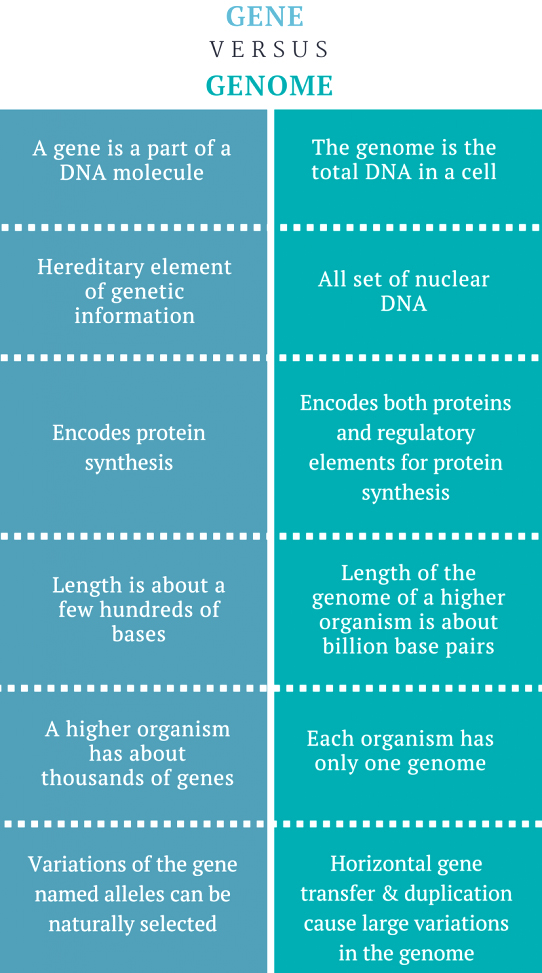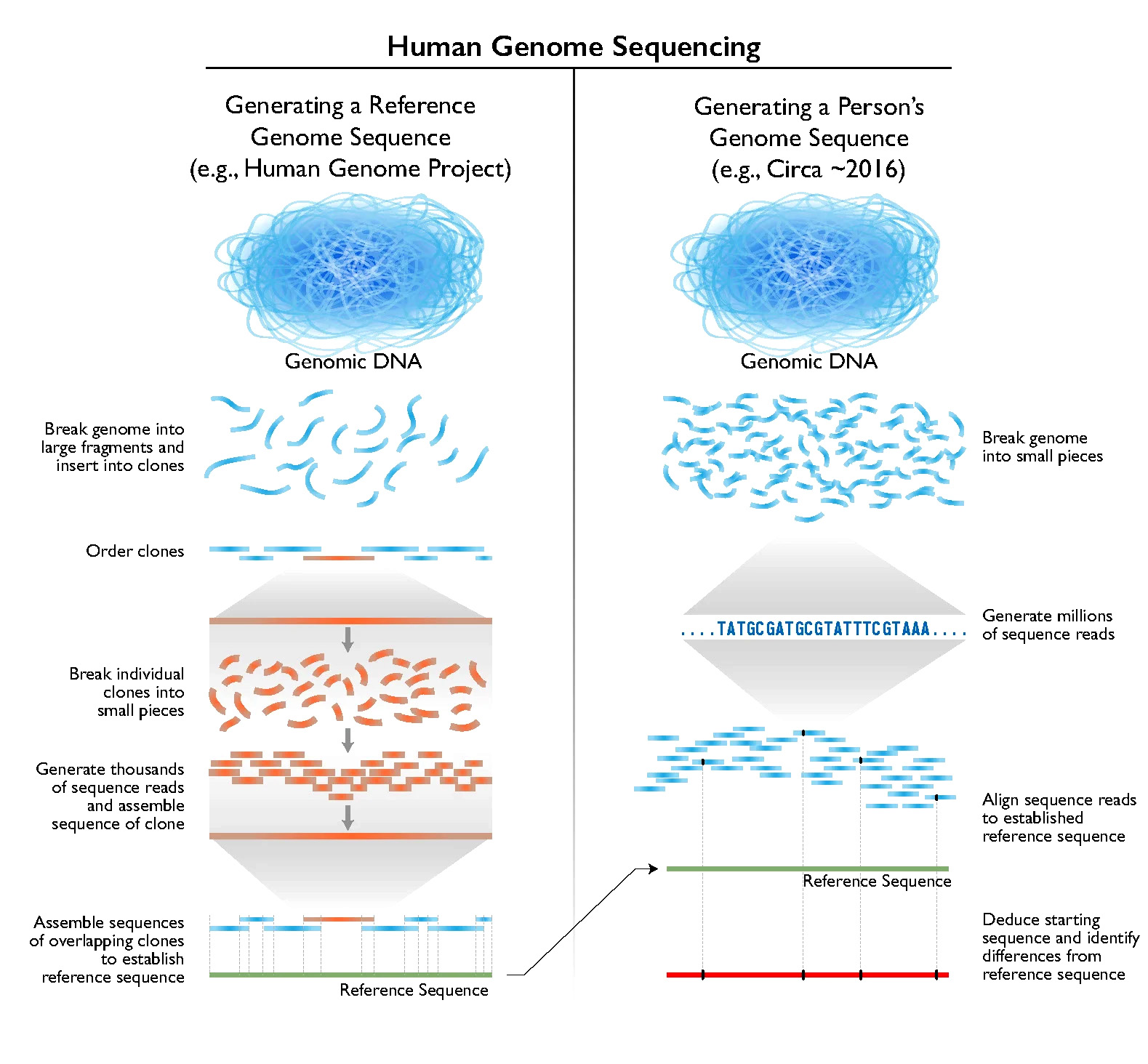Science & Technology
Human Genome
- 04 Apr 2022
- 8 min read
For Prelims: Human Genome, Genome, Genome Vs Gene, Telomere-2-Telomere (T2T) project, Genome India Project
For Mains: Human Genome and its significance, Genome India Project and its significance, Biotechnology.
Why in News?
Scientists had published the map of the human genome for the first time nearly two decades ago which was hailed as a breakthrough.
- In 2003, scientists got the breakthrough, but it was incomplete as about 8% of the human DNA was left unsequenced.
- Now for the first time, a large team has accounted for completing the 8% picture of the human genome.
- In 2020, the Ministry of Science and Technology had approved an ambitious gene-mapping project called the Genome India Project (GIP).
What is Genome?
- A genome refers to all of the genetic material in an organism, and the human genome is mostly the same in all people, but a very small part of the DNA does vary between one individual and another.
- Every organism’s genetic code is contained in its Deoxyribose Nucleic Acid (DNA), the building blocks of life.
- The discovery that DNA is structured as a “double helix” by James Watson and Francis Crick in 1953, started the quest for understanding how genes dictate life, its traits, and what causes diseases.
- Each genome contains all of the information needed to build and maintain that organism.
- In humans, a copy of the entire genome contains more than 3 billion DNA base pairs.
What is the Difference between Genome and Gene?
What was the Breakthrough for the First time?
- The genetic sequence was made available in 2003 from the Human Genome Project.
- Human Genome Project is an international collaboration between 1990 and 2003, containing information from a region of the human genome known as the euchromatin.
- Here, the chromosome is rich in genes, and the DNA encodes for protein.
- The 8% that was left out was in the area called heterochromatin, which is a smaller portion of the genome, and does not produce protein.
- There were at least two key reasons why heterochromatin was given lower priority.
- First: This part of the genome was thought to be “junk DNA”, because it had no clear function.
- Second: The euchromatin contained more genes that were simpler to sequence with the tools available at the time.
- Now, the fully sequenced genome is the result of the efforts of a global collaboration called the Telomere-2-Telomere (T2T) project.
- The invention of new methods of DNA sequencing and computational analysis helped complete the reading of the remaining 8% of the genome.
What is in the 8%?
- The new reference genome, called T2T-CHM13, includes highly repetitive DNA sequences found in and around the telomeres (structures at the ends of chromosomes) and the centromeres (at the middle section of each chromosome).
- The new sequence also reveals long stretches of DNA that are duplicated in the genome and are known to play important roles in evolution and disease.
- The findings have revealed a large number of genetic variations, and these variations appear in large part within these repeated sequences.
- Many of the newly revealed regions have important functions in the genome even if they do not include active genes.
What is the Significance of this Breakthrough?
- Make Easier the Study of Genetic Variation:
- A complete human genome makes it easier to study genetic variation between individuals or between populations.
- Can be used for reference while Studying the Genome:
- By constructing a complete human genome, scientists can use it for reference while studying the genome of various individuals.
- It would help them understand which variations, if any, might be responsible for disease.
- By constructing a complete human genome, scientists can use it for reference while studying the genome of various individuals.
- Study Provide More Accurate Information:
- The T2T consortium used the now-complete genome sequence as a reference to discover more than 2 million additional variants in the human genome.
- Complement the Standard Human Reference Genome:
- The new T2T reference genome will complement the standard human reference genome, known as Genome Reference Consortium build 38 (GRCh38), which originated from the Human Genome Project and has been updated since.
UPSC Civil Services Examination, Previous Year Questions (PYQs)
Q. With reference to agriculture in India, how can the technique of ‘genome sequencing’, often seen in the news, be used in the immediate future? (2017)
- Genome sequencing can be used to identify genetic markers for disease resistance and drought tolerance in various crop plants.
- This technique helps in reducing the time required to develop new varieties of crop plants.
- It can be used to decipher the host-pathogen relationships in crops.
Select the correct answer using the code given below:
(a) 1 only
(b) 2 and 3 only
(c) 1 and 3 only
(d) 1, 2 and 3
Ans: (d)
- Chinese scientists decoded rice genome in 2002. The Indian Agricultural Research Institute (IARI) scientists used the genome sequencing to develop better varieties of rice such as Pusa Basmati-1 and Pusa Basmati-1121, which currently makes up substantially in India’s rice export.
- In genome sequencing it takes less time.
- The genome sequencing enables the study of the entire DNA sequence of a crop, thus it aids in understanding of pathogens’ survival or breeding zone.
Q. What is Cas9 protein that is often mentioned in news? (2019)
(a) A molecular scissors used in targeted gene editing
(b) A biosensor used in the accurate detection of pathogens in patients
(c) A gene that makes plants pest-resistant
(d) A herbicidal substance synthesized in genetically modified crops
Ans: (a)
- CRISPR-Cas9 is a unique technology that enables geneticists and medical researchers to edit parts of the genome by removing, adding or altering sections of the DNA sequence.
- CRISPR is an acronym for “Clustered Regularly Interspaced Short Palindromic Repeats.”






